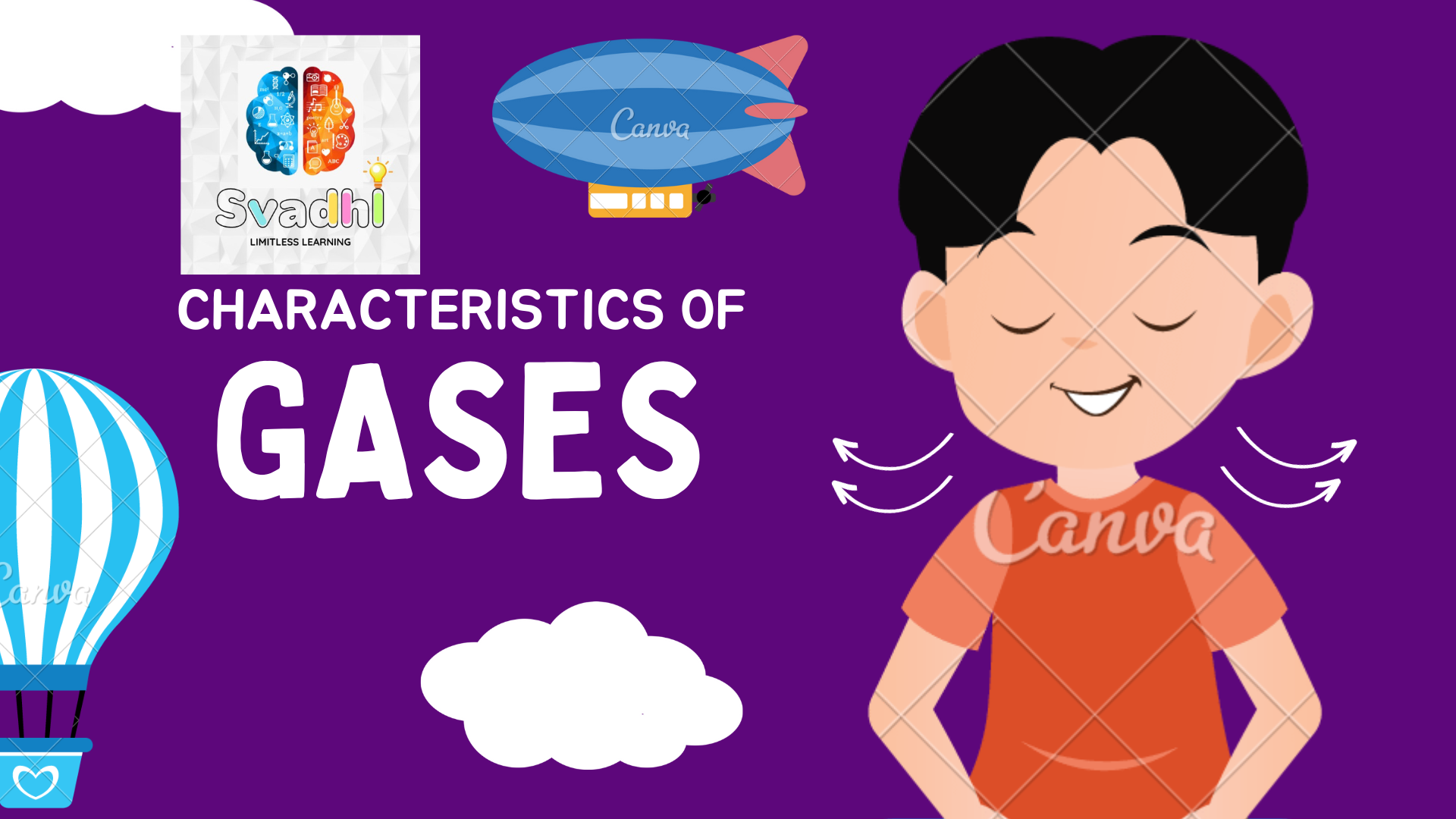Embark on an incredible voyage into the world of gases! Join us as we unravel the captivating characteristics of these shape-shifting substances, from their boundless expansion to their remarkable compressibility. Explore the unique nature of gases, from helium’s buoyancy to the power of expanding air. Let’s delve into the mesmerizing realm of gases together with Svadhi.in! Get ready to witness the wonders of gaseous matter!
Play to Listen here
Gases possess unique characteristics that differentiate them from solids and liquids. Here are key features:
Shape and Volume: Gases do not have a fixed shape or volume. They completely fill the container they are in, taking its shape and expanding to fill the available space.
- Example: Inflating a balloon demonstrates how a gas fills the space it’s in, taking the shape of the balloon.
Compressibility: Gases are highly compressible compared to solids and liquids. Their particles are far apart and can be squeezed closer together.
- Example: Compressing the air in a bike tire or a gas cylinder to increase pressure showcases gas compressibility.
Density: Gases are less dense compared to solids and liquids. Their particles are spaced far apart, making them lighter per unit volume.
- Example: Helium balloons float because helium gas is less dense than the surrounding air.
Diffusion and Effusion: Gases readily mix with each other through diffusion and pass through small openings via effusion due to their high mobility.
- Example: The smell of perfume spreading in a room demonstrates diffusion, while gas leaking from a punctured tire showcases effusion.
Expansion and Contraction: Gases expand when heated and contract when cooled. This is due to the increased or decreased energy of the gas molecules.
- Example: A hot air balloon rises because the air inside expands when heated, making it less dense than the surrounding air.
Pressure: Gases exert pressure on the walls of their container due to the constant collisions of gas molecules with the container walls.
- Example: Inflating a tire increases the pressure inside, allowing the tire to support the weight of a vehicle.
Changes in gas characteristics can occur under different conditions:
- Temperature: Heating a gas increases its kinetic energy, causing it to expand. Cooling a gas decreases its kinetic energy, making it contract.
- Example: Boiling water turns liquid water into steam (water vapor), which is a gas at higher temperatures.
- Pressure: Changes in pressure can affect the volume and density of gases. Higher pressure compresses gases, reducing their volume.
- Example: A scuba diver experiences changes in air volume and pressure with depth due to increased water pressure.
Understanding gas characteristics is crucial in fields like chemistry, meteorology, and engineering, influencing various applications from industrial processes to weather predictions.
Happy Learning Svadhi (The Self Learner)!


Leave a Reply